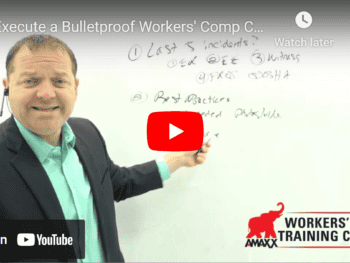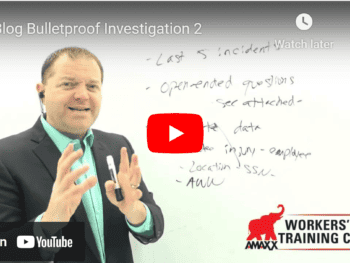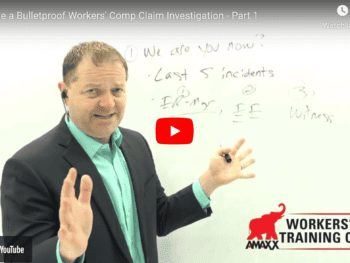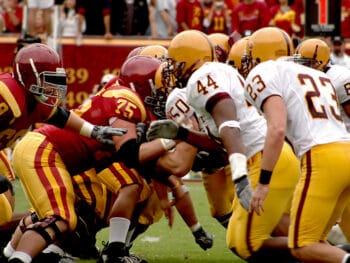
While some workers’ compensation payers say defense counsel are not their friends, those who do find they have better outcomes and lower overall program costs. It involves getting the right attorney and treating each other as a fiduciary.
Click Link to Access Free PDF Download
“13 Research Studies to Prove Value of Return-to-Work Program & Gain Stakeholder Buy-In”
Attorney’s Role
The main function of your attorney is to represent your organization’s interests in legal battles. However, many employers are expanding the role of lawyers; making them part of a team focused first and foremost on reducing your losses. Rather than trying to control costs by keeping attorneys at bay unless and until a suit is filed, they have realized better results by working closely with them throughout the process.
The idea is to get the perspectives of several professionals before making decisions, such as whether to accept or deny a claim and how to proceed. The team approach creates a synergy, yielding better outcomes. Your defense attorney should play a prominent role in the group.
Ideally, the attorney should be involved from the very beginning — sometimes, even before a claim has been filed. Employers and payers should be able to contact their defense attorneys by phone or email and:
- Ask questions based on the information you have.
- Get advice on whether to accept or deny the claim.
- Find out their thoughts on how best to limit exposure.
- Get recommendations for particular experts, such as independent medical examiners.
- Hear suggestions for investigative techniques.
It’s also incumbent upon payers to provide their attorneys with as much information as possible about the injury and the affected worker. For example, letting the lawyer know about an injured worker’s preexisting condition or the fact that he has been in therapy for three months could change his opinion and advice on how to move forward.
Getting the Right Attorney
If you wouldn’t feel comfortable contacting your attorney early in the claim process, you might want to find another attorney. If the lawyer starts billing you as soon as she picks up your phone call, she is not a ‘team member’ invested in your program.
To ensure you have the best attorney, look at his bills. He should not nitpick or overcharge you for simple questions or advice, and should be willing to explain all his charges.
Avoiding contact with your attorney at the beginning of a claim as a way to control costs should not be an issue. Your attorney should treat you as a friend and be willing to provide his thoughts without increasing his fee.
Winning in Court
Despite the best efforts of all involved, some claims will be contested. Having your defense attorney involved from the beginning gives you a leg up in court Additionally, you’ll have a competitive advantage if you investigate every case early and thoroughly, and be ready to try every single case.
While the employer technically does not have the burden of proof, in reality, that is how they should proceed. Payers should prepare based on the premise that they, not the injured worker, have to prove their case.
FREE DOWNLOAD: “13 Research Studies to Prove Value of Return-to-Work Program & Gain Stakeholder Buy-In”
Among the most effective tools to gather early in the claims process are:
- Written statements. The injured worker, supervisor, and any witnesses should be questioned and asked to sign statements attesting to their recollection of the incident. These can be a great tool later in court if these same individuals have different memories of the incident.
- Videos. A recording of the actual event as it happens is ideal, but not always available. However, several types of videos can help with a case:
-
- Video of the area. The judge and others will have a clearer understanding of how the incident occurred if they can see the actual conditions.
-
- While an actual recording of the incident may not be available, you can try to recreate it. This might show that the incident could not possibly have occurred in the way it was described.
-
- Short video of the job. This will help educate the judge, as well as the treating physician, IME, and the attorney. For example, it might show a different version of the worker’s tasks than what he has described, leading a physician to clear him to return to work.
-
- Outside angles. Cameras outside the area or the building may provide valuable insight, such as if the injured worker suddenly loses his limp when he steps out of the building.
- Social media. Payers should peruse a variety of social media sites. Younger workers, especially, are prone to post themselves in many environments and activities, some of which may be in direct contrast to their alleged injuries.
An effective defense attorney goes above and beyond the norm. That means presenting the evidence in the most persuasive manner possible.
Rather than just going to court with written statements, the attorney should bring people to testify, including the supervisor, the physician — in person or via phone — and witnesses who have signed statements. Live testimony from the injured worker or witnesses who recall the incident differently than they had originally can be asked to read aloud their written statements. The attorney can also ask the supervisor and witnesses to dress the way they were on the day of the incident as it lends more credibility.
Conclusion
Working closely with your defense attorney can help you identify the cases you should accept and those you should fight. Getting the attorney involved early in the process and doing a comprehensive investigation can avoid litigation in many cases, and help you win cases that do go to court.

Contact: mstack@reduceyourworkerscomp.com.
Workers’ Comp Roundup Blog: https://blog.reduceyourworkerscomp.com/
©2017 Amaxx LLC. All rights reserved under International Copyright Law.
Do not use this information without independent verification. All state laws vary. You should consult with your insurance broker, attorney, or qualified professional.













